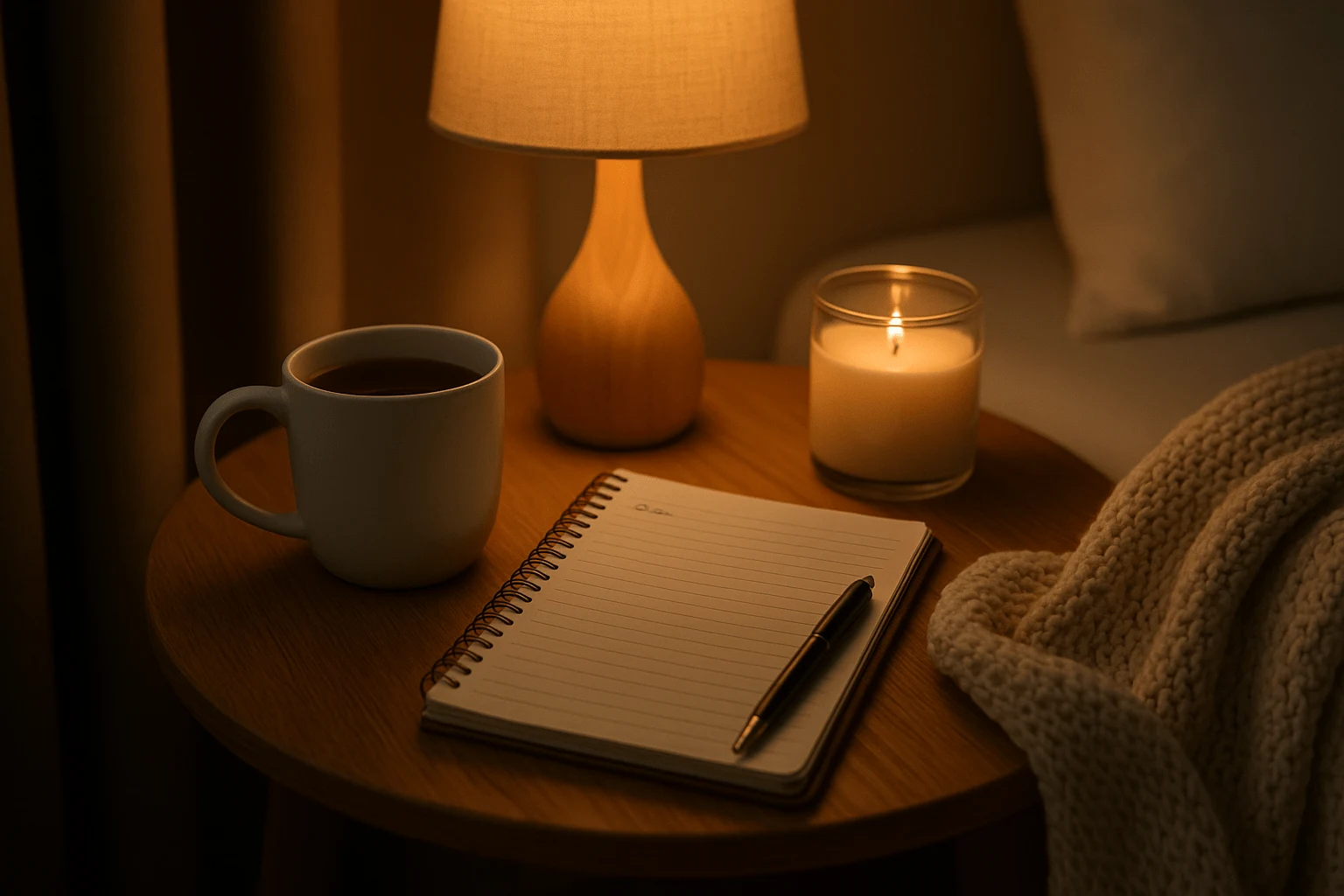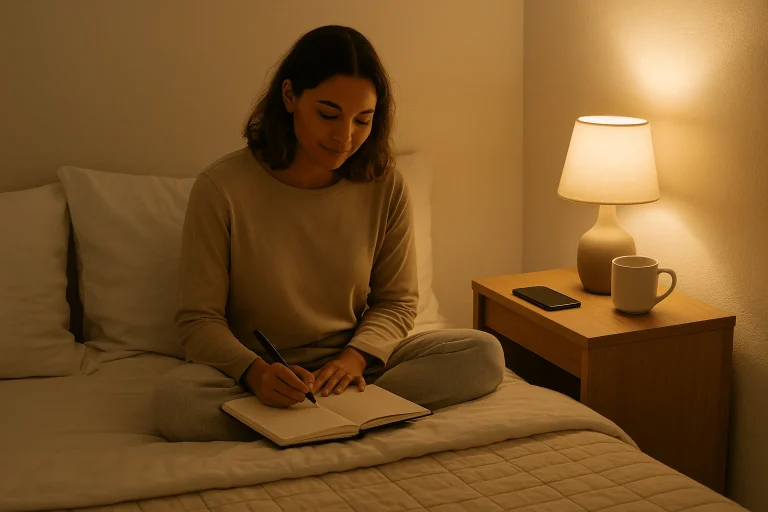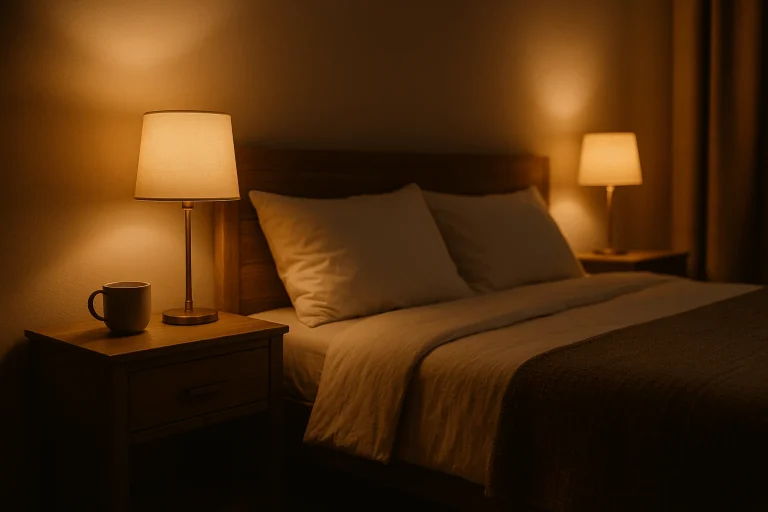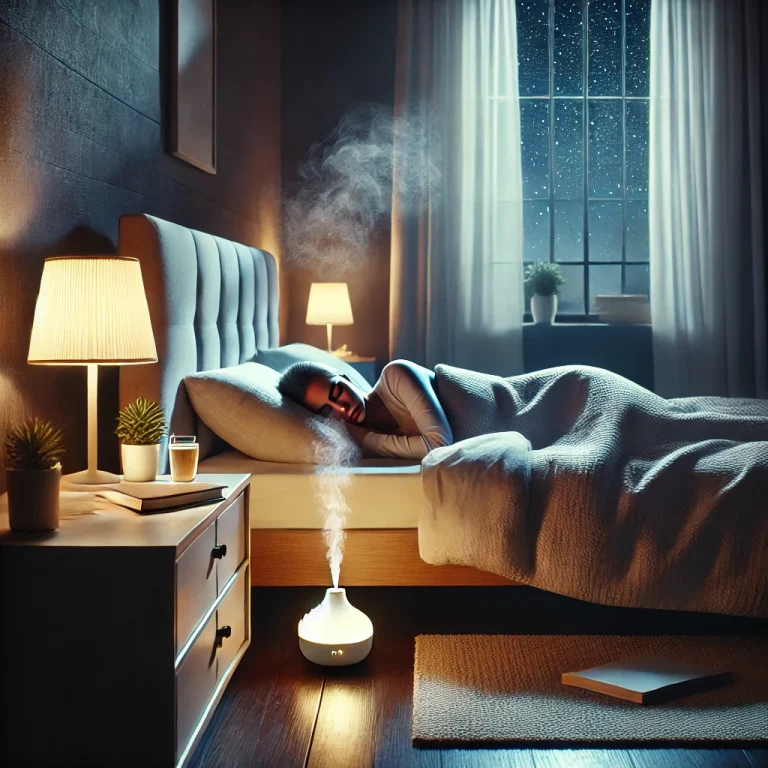How to Personalize Your Nighttime Routine for Maximum Sleep Quality
You’ve probably heard a million sleep tips by now.
“Drink chamomile tea.”
“Put your phone away.”
“Take a warm bath.”
And while those might work for some people… you’re not some people. You’re you.
The truth is, there’s no such thing as a perfect, one-size-fits-all sleep routine. What relaxes your body, calms your mind, and gets you into deep, restorative sleep? That’s personal. And if your current nighttime routine feels like a copy-paste from someone else’s life, it’s no wonder it’s not working.
Here’s the good part:
You can build an evening ritual that fits your rhythm, supports your needs, and actually feels good to stick with. Whether you’re a light sleeper, a night owl, or just someone who’s tired of tossing and turning, a personalized routine can change everything.
So if you’re ready to stop forcing habits that don’t work and start winding down in a way that finally makes sense—you’re in the right place.
Let’s dive in.
Why One-Size-Fits-All Sleep Advice Doesn’t Work
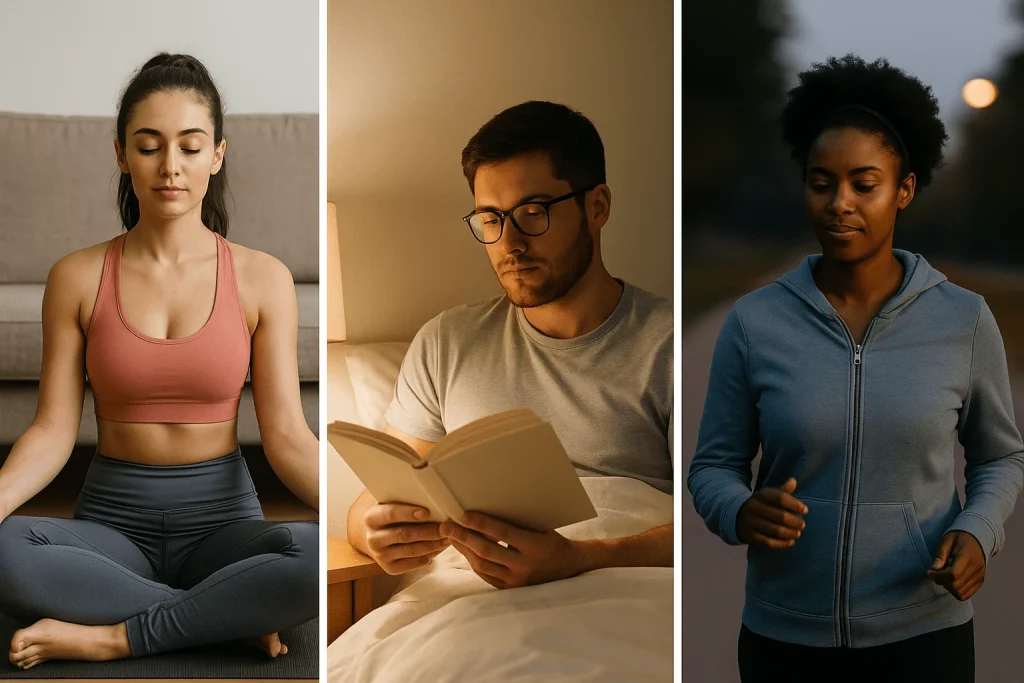
Your Sleep Style Is Unique—And That Matters
Some people wind down naturally at 9 p.m. Others don’t even think about sleep until midnight. Maybe you’re energized in the evening, or maybe you crash the moment dinner’s over. That’s not laziness or discipline—it’s biology.
Your chronotype (natural sleep rhythm) plays a big role in how your body responds to bedtime cues. Trying to copy a morning person’s 8:30 routine when your body’s wired for late nights? Frustrating. And likely to fail.
Copy-Paste Routines Often Backfire
Drinking tea works… until you realize it makes you wake up to pee at 2 a.m.
Journaling is great… unless it spirals you into overthinking.
It’s not that the advice is bad—it’s that it’s not personalized. A “perfect” routine that doesn’t match your reality won’t stick. And when routines don’t stick, sleep suffers.
What Does Work: A Routine That Feels Like You
Here’s the key: when your wind-down routine actually fits your energy, your preferences, and your lifestyle… it becomes something you look forward to, not just another task.
The result?
- Your mind and body start associating those habits with rest
- Falling asleep feels smoother, more natural
- You wake up feeling like your sleep finally did what it’s supposed to do—restore you
The Core Elements of a High-Quality Nighttime Routine
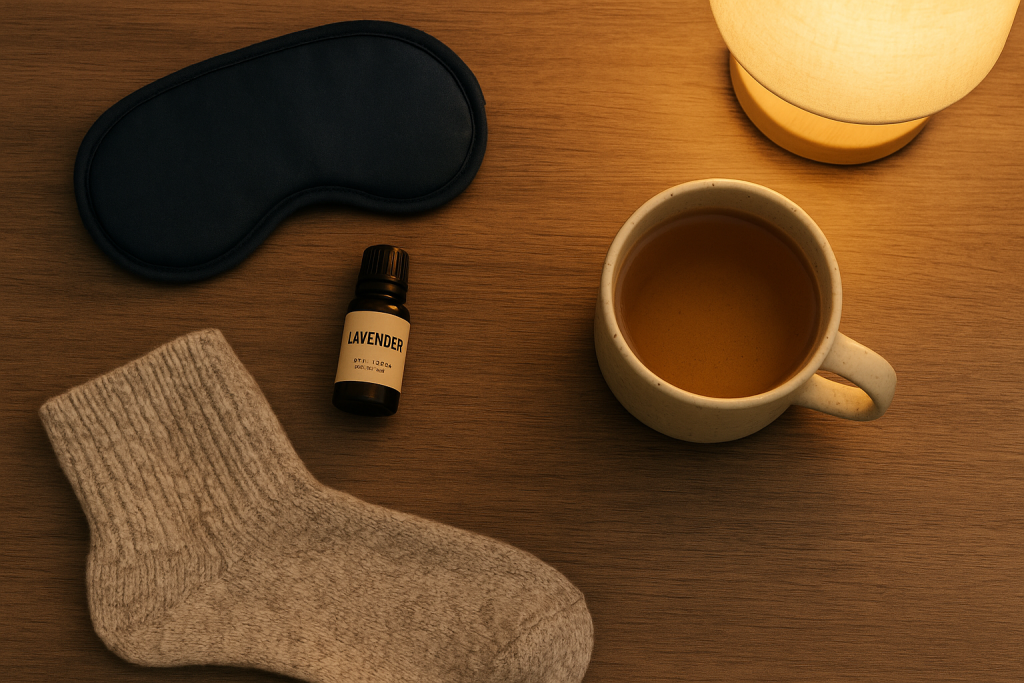
f you’ve ever thought, “I don’t even know where to start,”—you’re not alone.
But here’s the thing: your ideal nighttime routine doesn’t need to be complicated or take hours. It just needs to hit a few key areas that help your body and brain shift into sleep mode.
Think of it like setting the stage for sleep—mentally, physically, emotionally, and environmentally. Let’s break it down.
Mental Wind-Down: Quieting the Noise in Your Head
Ever lay in bed and suddenly remember that awkward thing you said 10 years ago?
Yeah. That’s your brain trying to process the day—right when you’re trying to sleep.
Instead of fighting it, give your mind a chance to slow down before you hit the pillow:
- Do a “brain dump”: Write down everything swirling in your head—no filter, no rules. Just get it out.
- Read something light (not the news!) to distract your brain gently
- Try a guided meditation or calming audio story—great for overthinkers
- Journaling prompts like “What felt good today?” or “What can I let go of tonight?”
The goal? Let your mind close its tabs before bed.
Related Post: How to Use Meditation for Better Sleep
Physical Cues: Teach Your Body It’s Time to Power Down
Your body thrives on rhythm. So when you give it consistent, physical signals that say “It’s bedtime,” it starts to listen.
Try these:
- Gentle stretches or a short yoga flow to release tension (especially in your back or legs)
- A warm shower or bath—even just 5 minutes can drop your core temp and prep you for sleep
- Turn off bright lights and switch to soft, warm lighting an hour before bed
- Avoid screens (yes, that includes your phone 😅) at least 30 minutes before sleep
Bonus tip: Apply magnesium lotion or calming essential oils (like lavender) to your neck, chest, or feet—tiny rituals that reinforce relaxation.
Emotional Safety: Create a Sense of Peace and Comfort
This part is often overlooked… but it’s powerful.
Feeling emotionally “settled” helps your nervous system relax. When you feel safe, your body doesn’t need to stay alert. That’s when deep sleep becomes possible.
Here’s how to build that emotional safety:
- Light a candle or use soft lighting—not just practical, but comforting
- Wrap yourself in a soft blanket or wear cozy socks
- Say something kind to yourself: “It’s okay to rest now,” or “You did enough today.”
- Avoid heavy conversations or stressful content late at night
Give yourself permission to let go of the day. You’re not “checking out”—you’re recharging.
Environmental Setup: Design Your Space for Deep Sleep
Your bedroom matters. It should feel like a sleep sanctuary, not an extension of your workday.
Here’s how to create a sleep-friendly environment:
- Cool, quiet, and dark: Aim for 60–67°F, blackout curtains, and white noise if needed
- Declutter your space—less visual chaos = calmer mind
- Soothe your senses: add calming scents (lavender, eucalyptus), use breathable bedding, and dim lights early
- Keep your phone out of arm’s reach—or better yet, out of the bedroom entirely
Your sleep environment isn’t just a backdrop. It’s a key player in how well you rest.
How to Create Your Personalized Nighttime Routine (Step-by-Step)
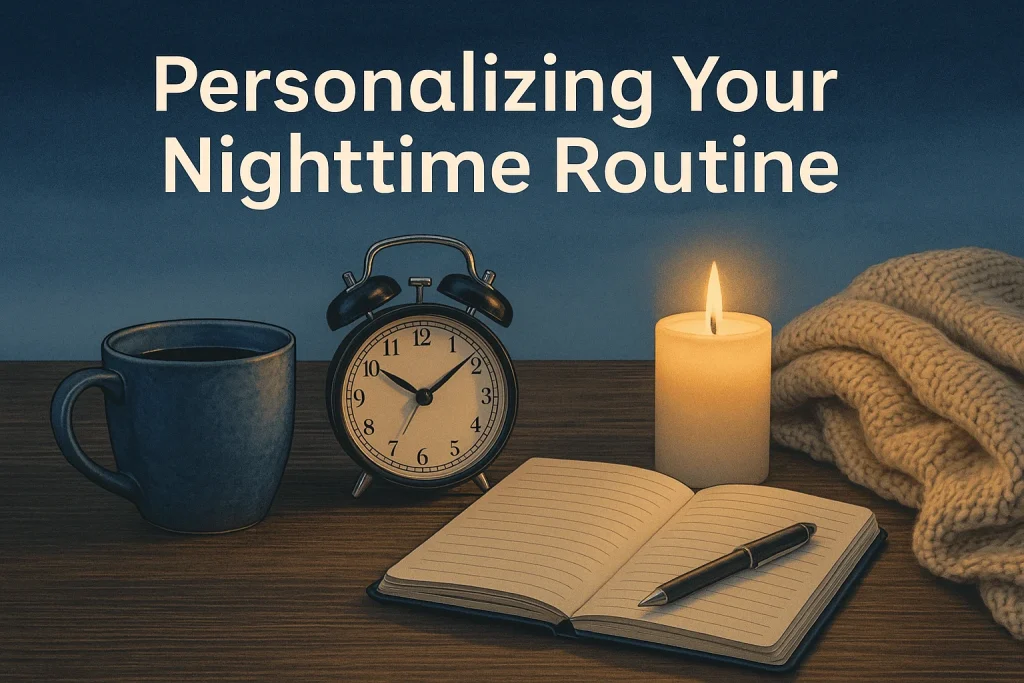
Now that you’ve got the building blocks, let’s turn them into something that fits you.
This isn’t about creating the “perfect” routine — it’s about finding what feels calming, doable, and natural. One small shift can make a big difference.
Let’s build your sleep-supporting ritual, step by step.
Step 1: Identify What’s Really Keeping You Up
Before you add anything new, pause and ask:
What’s getting in the way of your sleep right now?
Maybe you’re…
- lying in bed with racing thoughts
- scrolling late into the night
- waking up at 3 a.m. and can’t fall back asleep
- wired from work stress, sugar, or screen time
Take 2–3 nights to track your habits and how you feel at bedtime. Jot it down in a notebook or use a sleep tracker. Patterns will start to show — and that gives you clarity.
Step 2: Pick 1–2 Habits from Each Core Area
No need to overhaul your whole evening. Just choose 1 or 2 habits that feel good from each of the four core areas:
Mental, Physical, Emotional, Environmental.
Here’s a simple “habit menu” to choose from:
Mental
- Brain dump or journaling
- Guided meditation
- Reading fiction
Physical
- Light stretching
- Foot soak or warm shower
- Herbal tea (if it doesn’t wake you up later)
Emotional
- Gratitude list
- Candle or soft lighting
- Cozy blanket, calming music
Environmental
- Dim the lights
- Prep your bedroom for comfort
- Put your phone across the room
💬 Ask yourself: Which of these would actually feel nice, not forced?
Related Post: 5 Proven Mental Exercises for Sleep That Actually Work
Step 3: Time It Right — Work Backward from Sleep
This part is key: A great routine starts before your head hits the pillow.
- Decide your ideal bedtime (ex: 10:30 PM)
- Count backward 30–60 minutes — that’s when your routine should begin
- Create a mini flow that fits into that window
🧠 Example:
If you want to be asleep by 10:30…
- 9:45: Make tea, turn off main lights
- 10:00: Stretch + apply calming oil
- 10:15: Journal or listen to a sleep story
- 10:30: Lights out
The key? Make it realistic for your actual life — not some Pinterest-perfect version.
Step 4: Test, Tweak, and Repeat
This is where most people give up — but don’t.
Your first version won’t be perfect. That’s okay.
Think of your sleep routine as something you grow into, not something you have to get perfect right away.
- Try your routine for 5–7 nights
- Notice: Are you falling asleep faster? Feeling calmer? Waking less?
- Tweak one piece at a time (maybe swap tea for a foot soak, or read instead of journal)
📋 Bonus: Download our printable Nighttime Routine Tracker to stay consistent (and see what’s actually working!).
Sample Nighttime Routines Based on Sleep Types
Let’s bring everything together with a few real-life examples.
Because here’s the truth: what works for one person might not work for another.
That’s not failure — that’s personal biology, stress levels, and lifestyle. So instead of giving you a “perfect” template, here are a few sample routines tailored to different sleep needs.
See which one feels most like you, and feel free to mix, match, or modify.
For the Overthinker: Calm the Mind First
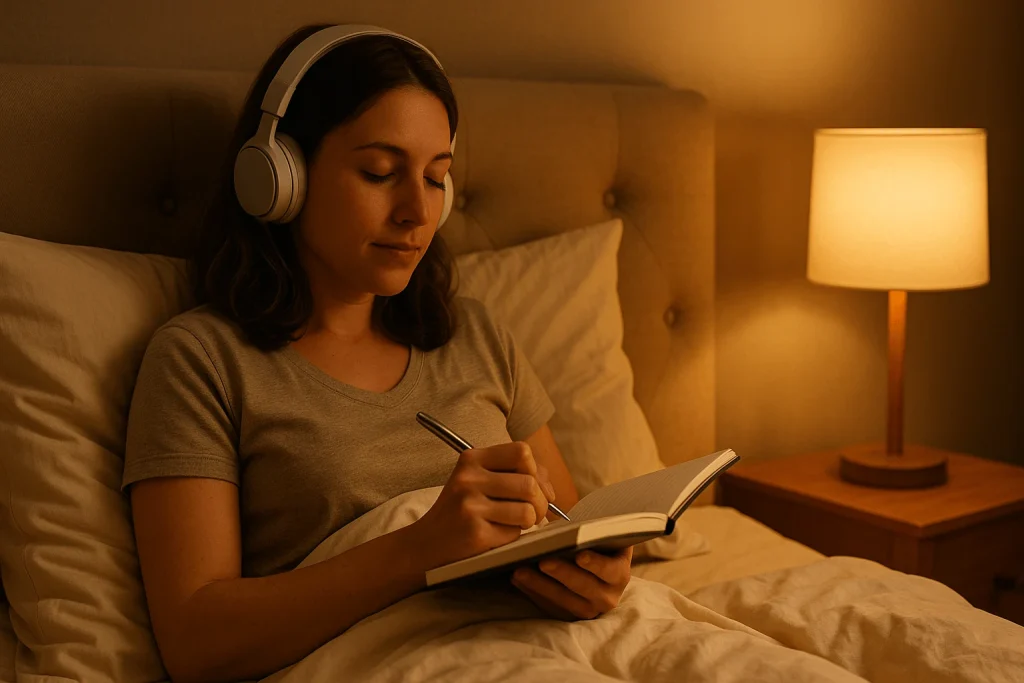
You’re mentally exhausted, but your brain won’t shut off.
You replay the day, worry about tomorrow, and toss for hours.
Your routine should focus on mental stillness + gentle sensory cues.
Sample Routine:
- 9:30 PM – Write down 3 things you want to release from your mind
- 9:45 PM – Listen to a calming meditation or audio story
- 10:00 PM – Apply lavender oil to your chest and breathe deeply
- 10:15 PM – Lights out, no screens nearby
Try adding: magnesium glycinate supplement (calms the nervous system)
For the Light Sleeper: Protect Your Environment
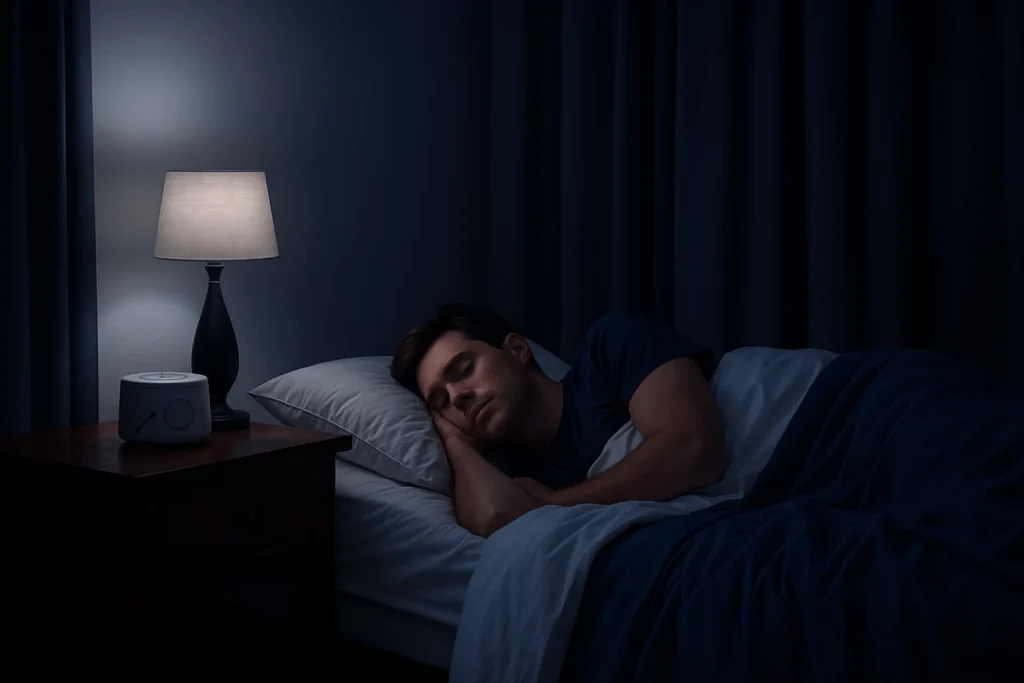
You fall asleep okay but wake easily — from sounds, light, temperature changes.
Your body needs a stable, protected sleep environment.
Sample Routine:
- 9:00 PM – Block outside light with curtains or a sleep mask
- 9:30 PM – Gentle stretching (neck, shoulders, back)
- 9:45 PM – White noise machine on, phone out of the room
- 10:00 PM – Lights off, room cool (65–67°F), cozy socks on
Avoid: caffeine after 2 PM and heavy meals close to bedtime
For the Night Owl: Reset the Rhythm Gently
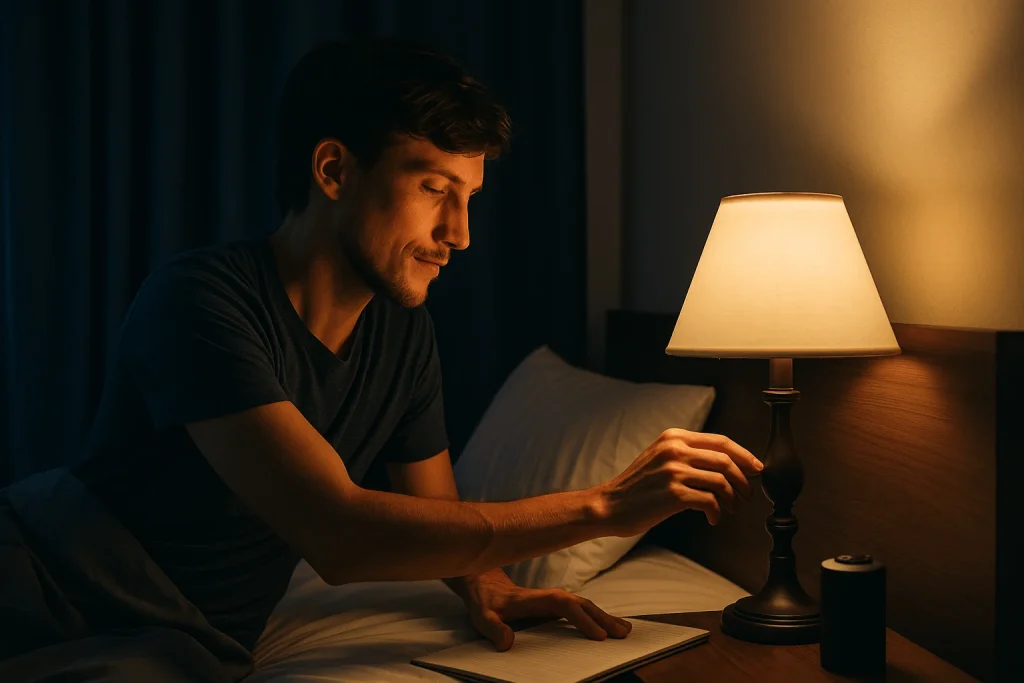
You get a second wind at night — and end up scrolling or working late.
Changing this takes time, but you can slowly train your body to wind down earlier.
Your focus: gradual light cues + habit stacking.
Sample Routine:
- 9:00 PM – Turn off overhead lights, switch to lamps
- 9:15 PM – Sip calming tea while reading fiction (no screens)
- 9:45 PM – Journaling: “3 things I’m grateful for today”
- 10:15 PM – Eye mask on, sleep sounds playing, lights out
Pro tip: Set a “wind-down alarm” 60 minutes before bed so your body knows it’s time to shift gears
For the Burned-Out or Anxious Sleeper: Restore & Soothe

If your body feels wired but tired… if anxiety hums just under the surface…
You need nervous system support, not just relaxation.
Your focus: full-body calming + emotional reassurance.
Sample Routine:
- 8:45 PM – Warm foot soak with a few drops of eucalyptus or chamomile oil
- 9:15 PM – Cuddle up with a weighted blanket or soft robe
- 9:30 PM – Practice 4-7-8 breathing or a simple breath-hold technique
- 9:45 PM – Whisper to yourself: “It’s safe to rest now.” Then lights out
Keep it simple: Even just 2 of these steps nightly can work wonders.
Mistakes to Avoid When Building Your Routine
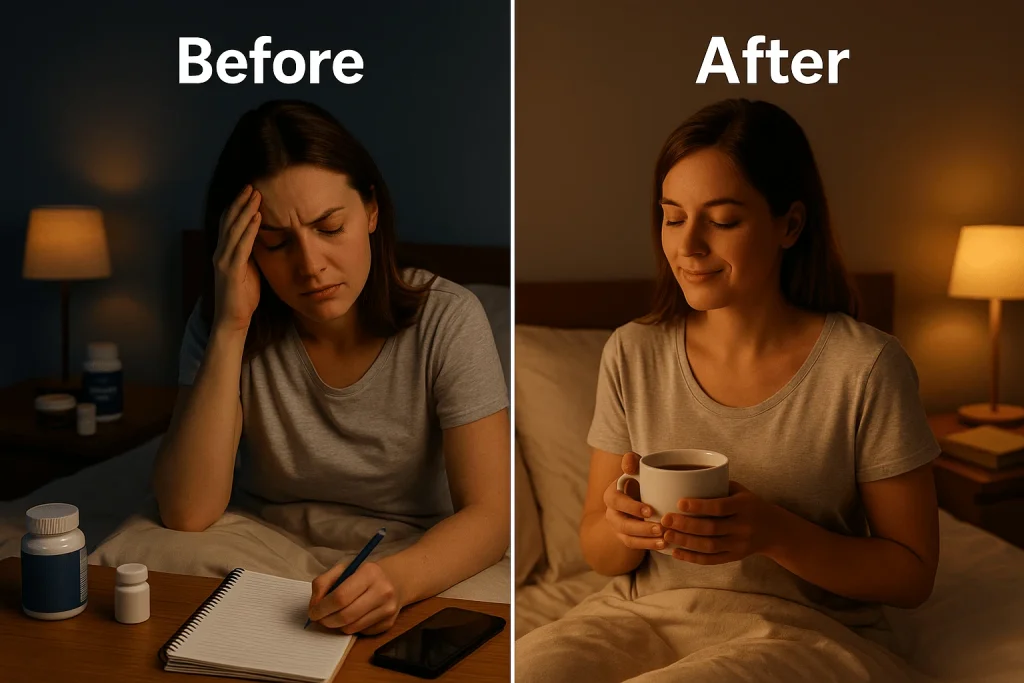
Okay, so you’ve got the tools, the examples, and the motivation. But let’s make sure you don’t fall into the traps that derail even the best intentions.
Because here’s the thing: most people don’t fail at bedtime routines because they’re lazy or unmotivated.
They struggle because the routine wasn’t designed to work with their real life.
Let’s clear up a few common missteps—so you can skip the frustration and actually start sleeping better.
Mistake #1: Trying to Do Too Much at Once
It’s tempting to go all-in: 10 new habits, full detox mode, strict bedtime… starting tonight.
But your brain and body don’t respond well to overwhelm.
Instead:
- Start with just one or two changes
- Focus on how each step makes you feel, not just what it “should” do
- Give it a few nights before adding more
Ask yourself: What’s one habit I can try tonight that feels easy and soothing?
Mistake #2: Copying Someone Else’s Routine Exactly
It’s easy to look at TikTok routines or wellness blogs and think, “I should be doing all that.”
But here’s the truth: what works for that person’s lifestyle, biology, or schedule might totally clash with yours.
Instead:
- Take inspiration, but customize it
- Honor your own energy, preferences, and needs
- Don’t force routines that feel like a chore
Your routine should feel comforting—not like another thing on your to-do list.
Mistake #3: Ignoring What Your Body Is Telling You
Sometimes we stick with a routine that’s not working just because we feel like we “should.”
If you’re still waking up groggy, wired at night, or feeling anxious despite your efforts—it’s time to adjust.
Instead:
- Notice how each part of your routine makes you feel (calm? tense? neutral?)
- Trust your body’s signals
- Be willing to tweak or remove what’s not serving you
Mistake #4: Skipping Your Routine When You’re Too Tired or Busy
Ironically, the nights you feel too tired, overwhelmed, or “off” are the ones where your routine can help the most.
Instead:
- Create a “mini” version of your bedtime routine for busy days
- Even just 5 minutes of quiet, breath, or gentle stretching makes a difference
- Consistency > perfection
Try this: Write down your “non-negotiable 5-minute wind-down” so you always have a fallback plan.
Final Thoughts: Keep It Simple and Consistent
A personalized nighttime routine doesn’t need to be perfect or complicated.
Just focus on a few habits that help you wind down—mentally, physically, and emotionally.
Start small. Stick with what feels realistic.
Adjust as needed.
The more consistent you are, the more your body will start to recognize those cues and respond with better, deeper sleep.
❓FAQs: Personalized Nighttime Routines
How long should a nighttime routine be?
Aim for 30–60 minutes, but even 10–15 minutes can help if you keep it consistent.
How do I know if my routine is working?
If you’re falling asleep faster, waking up less, or feeling more relaxed at night, your routine is likely helping.
What if it works sometimes but not always?
That’s normal. Sleep can be affected by stress, light, hormones, and more. Stick with your routine, but stay flexible.
I don’t have much time at night—what should I focus on?
Pick 1 or 2 habits that calm your body or mind. A short stretch, dim lighting, or turning off screens early can make a difference.
Can I personalize my routine if I have anxiety or chronic pain?
Yes. Focus on habits that feel gentle and soothing. Adjust based on what your body responds well to.

